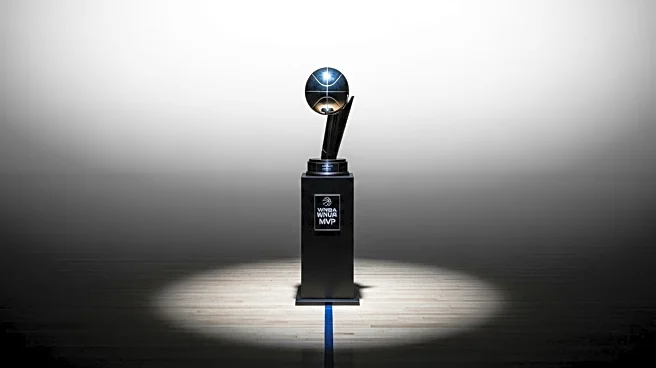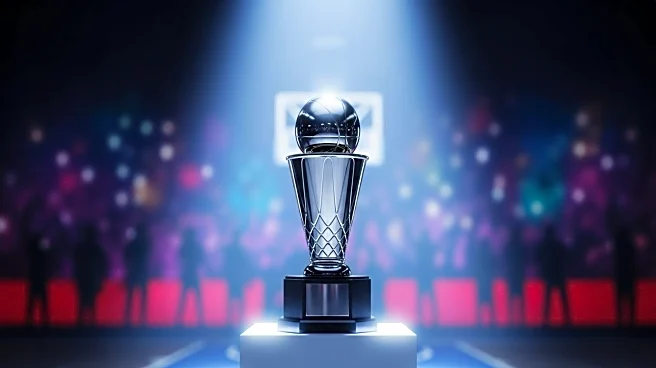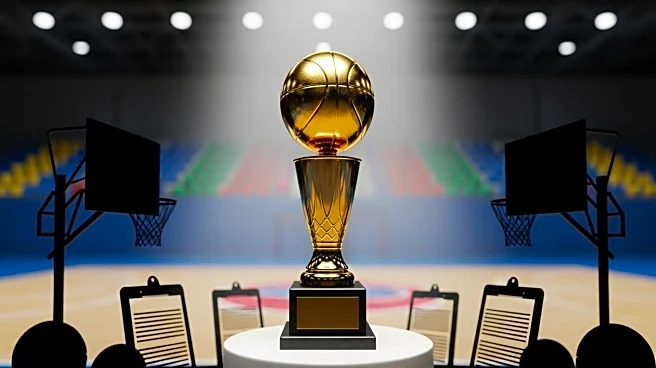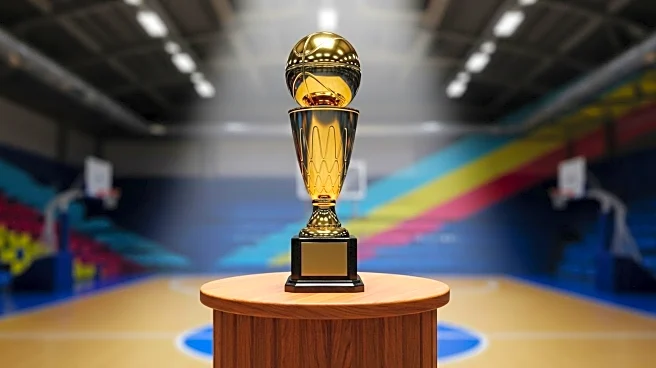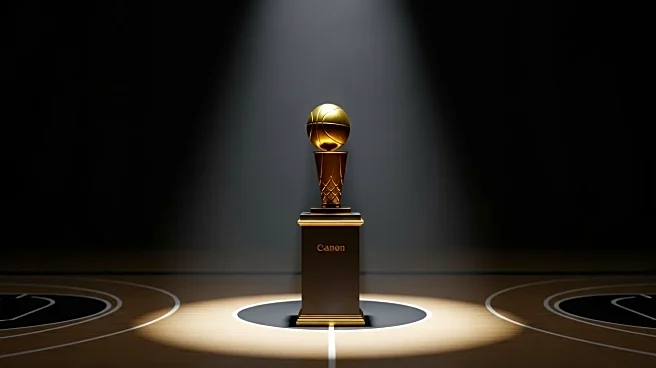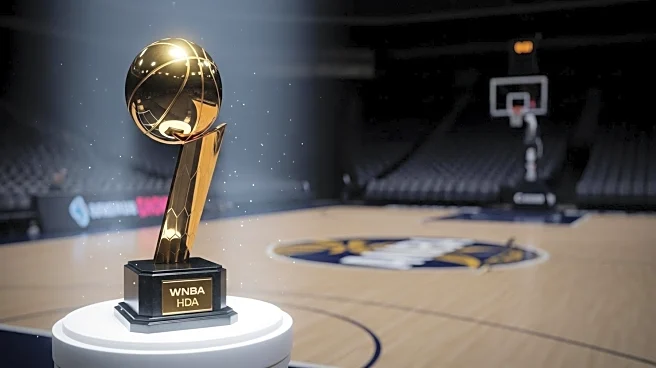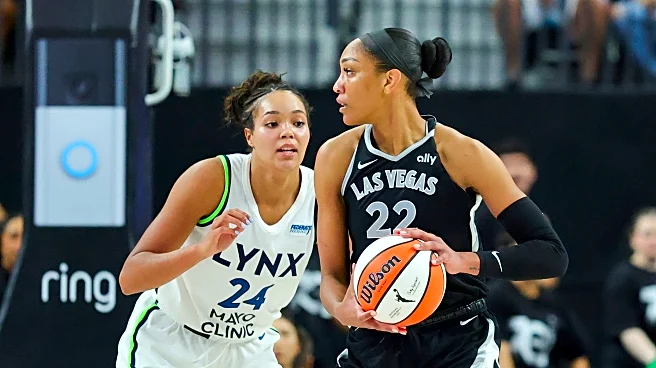What's Happening?
ESPN has announced its selections for various WNBA awards, with a particular focus on the MVP race between A'ja Wilson and Napheesa Collier. The network's contributors have largely favored Wilson, who has been instrumental in leading the Las Vegas Aces to a 15-game winning streak, elevating them to second place in the standings. Despite Collier's strong performance throughout the season, her absence due to injury for 10 games has impacted her standing in the MVP race. Wilson's recent performance has positioned her ahead in player value metrics, challenging Collier's early-season dominance. Alyssa Thomas is also noted as a potential contender, though she did not receive votes from ESPN.
Why It's Important?
The endorsement of A'ja Wilson by ESPN highlights the competitive nature of the WNBA MVP race and underscores the significance of individual performance in team success. Wilson's potential fourth MVP win would solidify her status as one of the league's top athletes, influencing team dynamics and future player contracts. The decision also reflects the impact of injuries on player evaluations and the importance of consistent performance. This development could affect fan engagement and media coverage, as well as the strategic decisions of teams in the league.
What's Next?
As the MVP race continues, the final decision will depend on the remaining games and player performances. Stakeholders, including team management and fans, will closely monitor the outcomes of upcoming matches. The announcement of the MVP winner will likely influence team strategies and player negotiations in the offseason. Additionally, the recognition of Wilson's achievements could inspire younger athletes and impact the league's marketing strategies.
Beyond the Headlines
The MVP debate between Wilson and Collier highlights broader themes in sports, such as the role of media endorsements in shaping public perception and the impact of injuries on career trajectories. It also raises questions about the criteria used in award selections and the balance between individual accolades and team success. This discussion may lead to further analysis of player metrics and the evolution of award criteria in professional sports.
